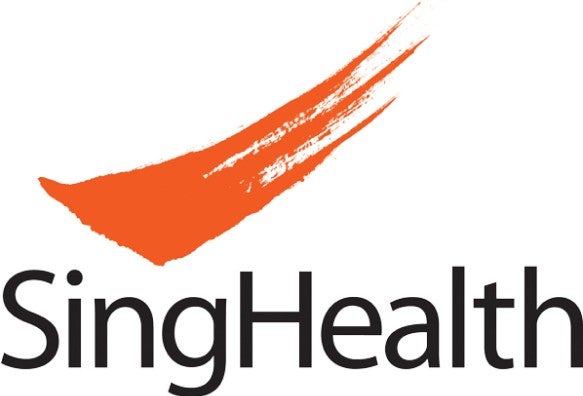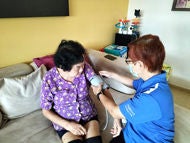What is - Coeliac Disease
What is coeliac disease?
Coeliac disease (also known as celiac disease) is a condition in which the lining of the small intestine gets inflamed and damaged in response to the consumption of gluten-containing food.

Gluten is a protein present in wheat, barley, rye and oats. When individuals with coeliac disease consume gluten, they experience an immune response which damages the lining of their small intestine, particularly the finger-like villi, which are responsible for nutrient absorption. This leads to a variety of symptoms and complications that can greatly impact one’s quality of life.
What are the types of coeliac disease?
- Classical coeliac disease: This form presents the hallmark symptoms associated with coeliac disease, such as diarrhoea, weight loss and malabsorption. Classical coeliac disease is often detected in childhood or early adulthood, where the symptoms are directly related to gastrointestinal distress.
- Non-classical coeliac disease: Unlike the classical type, non-classical coeliac disease may have less pronounced gastrointestinal symptoms or none at all. Instead, individuals may experience issues like anaemia, fatigue, osteoporosis or neurological symptoms. This type often goes undiagnosed for longer due to its subtler presentation.
- Silent or asymptomatic coeliac disease: In silent coeliac disease, individuals show no noticeable symptoms. However, damage to the small intestine is still present, which can be detected through small intestine biopsies or blood tests. People with this type are often diagnosed through screening, especially if they have a family history of the condition.
- Potential coeliac disease: People with potential coeliac disease have positive blood test results but no visible damage to the intestinal lining upon biopsy. They may or may not develop the disease later, so monitoring is typically recommended.
Symptoms of Coeliac Disease
What are the symptoms of coeliac disease?
Coeliac disease symptoms may vary in intensity and can be intermittent. They can range from mild and easily overlooked to severe, significantly impacting daily life. The cyclical nature of symptoms underscores the importance of medical treatment.
- Bloating and swollen belly: The small intestine's inability to absorb nutrients due to gluten exposure leads to the accumulation of gas, causing bloating and a swollen belly. This may be accompanied by mild stomach pain.
- Diarrhoea and abnormal stools: Malabsorption in the small intestine can result in diarrhoea or loose, bulky, pale, frothy and foul-smelling stools. These stools contain a significant amount of fat, making them difficult to flush. While children and adults may experience similar symptoms, constipation is more common in children.
- Unexplained weight loss: Individuals with coeliac disease, both adults and children, may experience unexplained weight loss. Younger children may also struggle to gain weight and grow as expected – a condition known as failure to thrive.
- Fatigue and weakness: Poor nutrient absorption due to coeliac disease can cause a general lack of strength and energy, leading to fatigue and weakness. Nutrient deficiencies further contribute to these symptoms.
- Vomiting: Some individuals may experience vomiting after consuming gluten. This reaction is more common in children than adults and reflects the body's adverse response to gluten ingestion.
- Neurological symptoms: Coeliac disease can manifest neurological symptoms, such as tingling, numbness or pain in the extremities. This is often linked to the condition’s impact on the nervous system.
When should you see a doctor?
Coeliac disease may not be as common in Singapore as in some western countries but is still requires attention and awareness. If left undiagnosed, it can cause potential serious complications.
See a doctor if you:
- Have a family history of coeliac disease or related autoimmune disorders.
- Are consistently experiencing symptoms such as gas, bloating, abnormal stools, abdominal pain or discomfort.
- Are losing weight without a clear reason or if your child is not gaining weight or growing as expected.
- Experience chronic fatigue and weakness, especially if it is impacting your daily life and activities.
- Experience frequent vomiting, particularly after consuming gluten-containing foods.
- Suspect gluten sensitivity or have observed adverse reactions to gluten-containing foods.
What are the potential complications of coeliac disease?
- Malnutrition: Damage to the small intestine can hinder proper nutrient absorption, leading to malnutrition. This results in insufficient levels of essential vitamins and minerals in the body.
- Bone density loss: Coeliac disease may contribute to bone density loss, increasing the risk of osteoporosis and fractures. This is partly due to inadequate absorption of vitamin D and calcium.
- Fertility issues: In some cases, coeliac disease can affect fertility, making it more difficult to conceive. A gluten-free diet may improve fertility outcomes.
- Pregnancy complications: Pregnant women with untreated coeliac disease may face a higher risk of miscarriage and complications during pregnancy.
- Lactose intolerance: Coeliac disease can be associated with lactose intolerance, causing symptoms such as bloating, diarrhoea and abdominal pain after consuming dairy products.
- Dermatitis herpetiformis: This is a skin condition characterised by a blistering, itchy rash, often associated with coeliac disease.
- Anaemia: Iron and B12 or folate deficiency
- Small Bowel Cancer (Lymphoma): A rare but serious complication of coeliac disease
Coeliac Disease - How to prevent
How is coeliac disease prevented?
Preventing coeliac disease is challenging because it is primarily a genetic condition. However, certain measures may help reduce the risk of triggering symptoms:
- Regular medical check-ups: For those with a family history of coeliac disease, routine screenings can aid early diagnosis and management, helping to prevent severe symptoms and complications.
- Awareness of family history: Being aware of coeliac disease within the family can help individuals seek early testing and avoid prolonged gluten exposure if symptoms arise.
Coeliac Disease - Causes and Risk Factors
What causes coeliac disease?
Coeliac disease is one of the few autoimmune disorders with a well-established trigger. Gliadin, a component of gluten found in wheat and other grains such as barley, acts as a trigger in individuals with coeliac disease and sets off an immune response.
- Immune response to gliadin peptides: When gliadin is broken down during digestion, it forms peptides. In coeliac disease, these gliadin-derived peptides are recognised by the immune system as harmful invaders. Mistaking gliadin-derived peptides as threats, the immune system attacks the lining of the small intestine. This response damages the intestinal villi, which affects nutrient absorption and leads to symptoms such as bloating, pain and stool abnormalities.
- Physical stress on the immune system: The onset of coeliac disease may result from excessive physical stress on the immune system, such as during surgery, illness or pregnancy. These stressors can trigger an unusual immune reaction to gluten, leading to the manifestation of coeliac disease.
- Gut microorganisms: Gut microorganisms may influence how the immune system responds to gluten. Changes in the gut microbiome can affect what substances pass through the intestinal wall. This could allow easier passage of gluten fragments, contributing to the immune response seen in coeliac disease.
What are the risk factors for coeliac disease?
Several factors can increase an individual's risk of developing coeliac disease:
- Family history: Having family members, especially parents or siblings, with coeliac disease increases the risk. For immediate family members, the chance of developing coeliac disease is about 10%.
- Genetic markers: The presence of specific genetic markers, particularly HLA-DQ2 or HLA-DQ8, significantly increases predisposition.
- Ethnicity: Individuals of Northern European descent are more commonly affected by coeliac disease.
- Associated conditions: Certain conditions, such as type 1 diabetes, Down syndrome and rheumatoid arthritis, increase the risk. Some studies suggest a link between childhood infections, particularly rotavirus and an increased likelihood of coeliac disease.
- Gender: Coeliac disease is more frequently diagnosed in females.
- Age of onset: Coeliac disease may manifest in early childhood, typically when gluten is introduced into the diet or later in mid-life, between the ages of 40 and 60.

Diagnosis of Coeliac Disease
How is coeliac disease diagnosed?
Medical examination
- Symptom check: The doctor will ask about ongoing diarrhoea, abdominal pain, tiredness, weight loss, skin rashes and family history.
- Diet and health history: They may ask if you have tried a gluten-free diet, and ask about related conditions like autoimmune disorders or infertility. Patients should not start a gluten-free diet before being tested, as this could affect test results. A gluten free diet is not only one that excludes wheat. Gluten is also present in other grains such as barley, rye and oats. It is also used as a additive in many other products (as hidden gluten). Some examples include condiments, sauces, beauty products, personal care products, etc. Proper education on identifying names of ingredients and items to be excluded is key. It is essential to consult a dietitian when starting a gluten-free diet.
Physical examination: Signs of poor nutrition, weight loss, slow growth, belly tenderness, bloating and rashes are checked for.
Antibody testing
Blood tests detect antibodies commonly associated with coeliac disease, such as Anti-tTG, EMA, and Anti-DGP antibodies.
Genetic testing
A blood or cheek swab checks for gene variants (HLA-DQ2 and HLA-DQ8) that increase coeliac risk.
Endoscopic biopsy
If tests suggest coeliac disease, a biopsy is done to confirm it. An endoscope (a small camera at the end of a long tube) is inserted from the throat to the stomach and the first part of the small intestine (duodenum), to take a biopsy/sample of the small intestine.
Treatment for Coeliac Disease
How is celiac disease treated?
Gluten-free diet
The one and only way to control celiac disease is to completely get rid of gluten from your life.
Patients must eliminate all sources of gluten from their meals, including wheat-based products.
- Fresh fruits and vegetables are gluten-free. Be careful about processed or canned varieties, as they may have added ingredients that contain gluten.
- Unprocessed meats, such as beef, chicken, turkey and fish, are gluten-free. However, be mindful of marinated or processed meats that may contain gluten-containing ingredients.
- Fresh fish and seafood are gluten-free. Again, watch for added seasonings or coatings, as they may contain gluten.
- Eggs in their natural form are gluten-free and can be a versatile component of a gluten-free diet.
- Most dairy products, including milk, cheese, yoghurt and butter, are naturally gluten-free. Some processed dairy products can have gluten-containing additives, so it is essential to check labels.
- Lentils, beans and peas are naturally gluten-free and are a good source of protein and fibre.
- Most nuts are considered gluten-free. However, cross-contamination is possible, so it is advisable to choose products labelled gluten-free.
- Some individuals with coeliac disease can tolerate gluten-free oats. It is crucial to choose oats labelled as gluten-free to avoid potential cross-contamination.
- Many brands produce gluten-free versions of common food items, such as pasta, bread, crackers and snacks. Look for products labelled as gluten-free to ensure they meet dietary restrictions.
Beyond dietary adjustments, individuals must remain vigilant about hidden sources of gluten. Products such as cosmetics, toothpaste and medications may contain trace amounts of gluten, too.
Supplements
Due to malabsorption issues common in coeliac disease, nutritional deficiencies are prevalent. Physicians may recommend supplements to address specific deficiencies, including:
- Calcium
- Folate
- Iron
- Magnesium
- Niacin
- Riboflavin
- Vitamin B12
- Vitamin D
- Zinc
Medication
While medication is not the primary treatment for coeliac disease, it may be prescribed in certain cases. For example, individuals with dermatitis herpetiformis (a type of rash seen in some coeliac disease patients) might be given dapsone to control the rash.
FAQs on Coeliac Disease
Currently, no cure exists for coeliac disease. The primary treatment involves a lifelong strict gluten-free diet to manage symptoms and prevent complications.
Yes, coeliac disease can go undiagnosed for years, especially if symptoms are mild or non-specific. Some individuals may not experience noticeable symptoms but can still have intestinal damage.
Yes, gluten intolerance or non-coeliac gluten sensitivity is different from coeliac disease. Gluten intolerance alone does not involve an autoimmune response and does not typically cause intestinal damage.
References
Kindi, R. A., Salmani, A. A., Hadhrami, R. A., & Maashani, M. A. (2023). Epidemiology of Celiac Disease. In Celiac Disease and Gluten-Free Diet. IntechOpen. https://doi.org/10.5772/intechopen.110195
Lee, W. (2021, September 22-26). Serologic Testing for Celiac Disease and Gluten Intolerance in a Singaporean paediatric endocrine and growth clinic [Conference session]. 59th Annual ESPE (ESPE 2021 Online), Singapore, Singapore. [Dr. Warren Lee's Paediatrics, Growth & Diabetes]
Coeliac disease: Causes, symptoms, treatment & support. Guts UK. (2024, August 15). https://gutscharity.org.uk/advice-and-information/conditions/coeliac-disease/
About coeliac disease. Coeliac UK. (n.d.). https://www.coeliac.org.uk/information-and-support/coeliac-disease/about-coeliac-disease/
What is celiac disease?. Celiac Disease Foundation. (n.d.). https://celiac.org/about-celiac-disease/what-is-celiac-disease/
Kurppa, K., & Agardh, D. (2022). Pediatric coeliac disease. Coeliac Disease and Gluten-Related Disorders, 23–41. https://doi.org/10.1016/b978-0-12-821571-5.00002-7
The information provided is not intended as medical advice. Terms of use. Information provided by SingHealth.
Get to know our doctors at SingHealth Hospitals in Singapore.
Get to know our doctors at SingHealth Hospitals in Singapore. here.




















